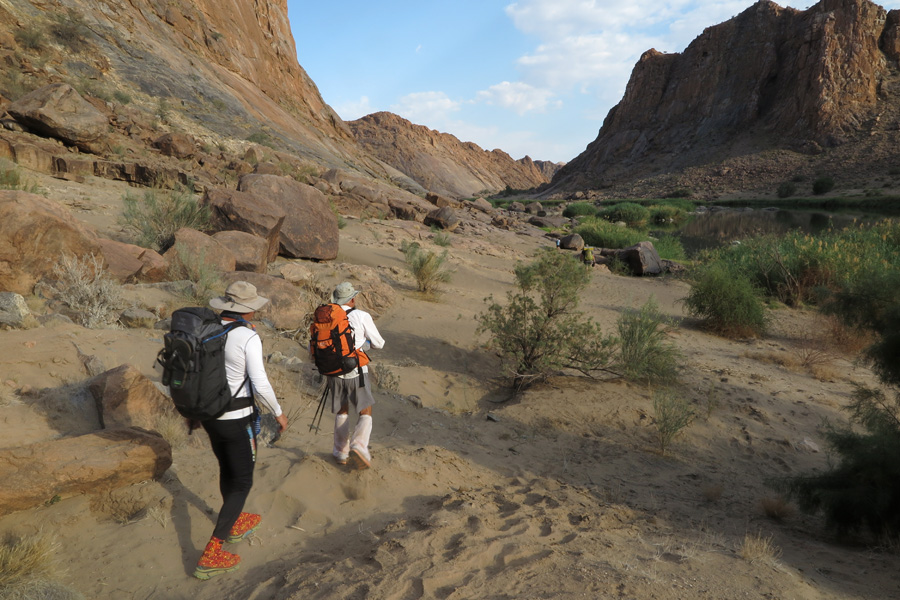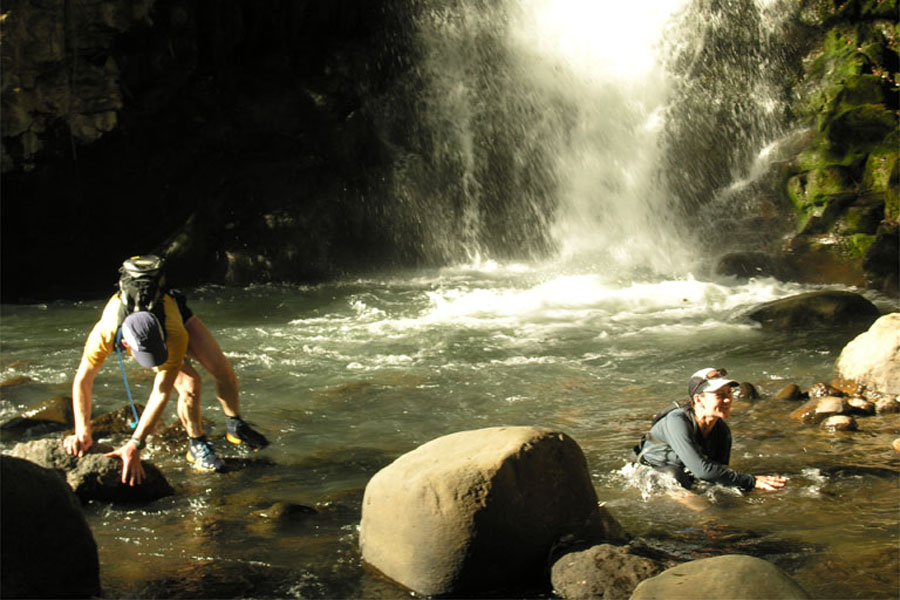B.C. couple overcomes extreme heat to finish 250-kilometre desert race
A B.C. couple finished the 250-kilometre Kalahari Augrabies Extreme Marathon in October despite temperatures reaching 62 C.

“An extra hour on the course could be the difference between life and death.”
[shareprints gallery_id=”29890″ gallery_type=”thumb_slider” gallery_position=”pos_center” gallery_width=”width_100″ image_size=”large” image_padding=”2″ theme=”dark” image_hover=”false” lightbox_type=”slide” captions=”true” comments=”true” sharing=”true”]
There were more life-threatening concerns than leopards and scorpions for 51-year-old Jacqueline Windh and her husband Dave Gilbert during the Kalahari Augrabies Extreme Marathon.
The Port Alberni, B.C.-native and her husband battled extreme temperatures, reaching 62 C, en route to finishing the 250-kilometre adventure race in South Africa. The event was run over seven days beginning on Oct. 13 and consisted of six legs. The race was self-sufficient, meaning all supplies had to be carried by competitors. The legs ranged from 28 to 75 kilometres with 70 participants beginning the race. Many dropped out for medical reasons.
“It was worrisome to see athletes collapse and require medical attention, especially those who we got to know over the first few days,” said Windh. “Still, we had to stick to our own race plan and stay focused. There was no room for error.”
There were medical checkpoints along the route where doctors assessed competitors, giving them the option of taking a short course or dropping out. Two days into the race, 20 per cent of racers had dropped out. The race became more about surviving than dashing to the finish line.
“The most important part was staying focused and taking in fluid at every checkpoint,” noted Windh. “You have to run continually bloated, taking in electrolytes, water, and food not only so you can make it through the day but also to keep yourself going the following day.”

Windh was nearly forced to drop out of the race on the third leg after having trouble keeping her body temperature low. She persevered with the help of fellow ultrarunning competitors. The fourth leg would be the toughest, and longest, which would be subsequently called off because of unsafe temperatures.
“If you lose attention for a few minutes, you can become dazed and veer off course,” said Windh. “It’s vital to stay focused since an extra hour on the course could be the difference between life and death.”
With a rest day following the previous stage’s cancellation, Windh and Gilbert were able to complete the final two days unscathed.
Windh originally got into running, and then adventure racing, shortly after working at the Patagonia Expedition Race in Chile in the early 2000s.
“I worked as a reporter at the Patagonia Expedition and that’s where I was inspired to start running,”said Windh. “I began jogging alongside athletes in order to get better photographs and interviews.”
RELATED: Running a marathon in Patagonia.

Next up for Windh is the Coastal Challenge in Costa Rica, a six-stage, 230-kilometre adventure race featuring 10,000 metres of elevation gain. The race in mid-February is set along Costa Rica’s coast before competitors head inland through the nation’s rain forests and mountain trails.
Photos: Jacqueline Windh/Kalahari Augrabies Extreme Marathon


